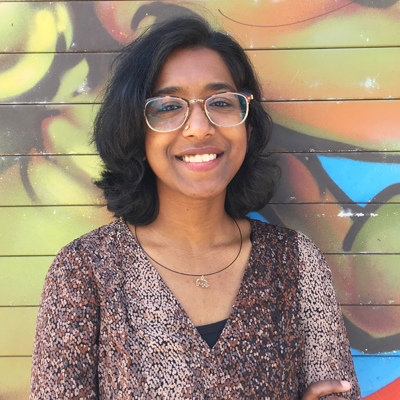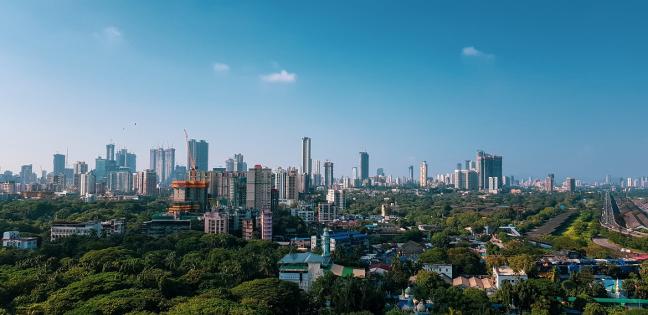
This blog originally appeared on WRI INDIA.
This is third in the ongoing series of blogs on Urban India Going Underwater. Read the first and second blogs here.
In the last few years many Indian cities have started working on interventions aimed at flood-proofing and stormwater management at various scales. Bhopal’s green-blue smart city plan, Delhi’s Masterplan 2041, Chennai’s water as leverage initiative, all address at an urban policy and development guidelines scale. Other cities are experimenting with landscape design led solutions to tackle the flood fury such as Chennai and Bengaluru with recharge wells. Although these efforts are steps in the right direction, they are few and far between and highly staggered in order to be able to address this challenge holistically. So, what should a city do in order to become flood resilient? The preceding two blogs in the series shed light on why Indian cities are drowning with every subsequent rainfall and how similar challenge has been dealt globally respectively. In this blog, authors envision how an Indian city can become urban flood resilient using strategic, tactical, integrated blue-green (nature based solutions) and grey (built-up/ engineered) urban design solutions.
Let’s imagine an Indian city “Sheher”, which annually gets inundated with rainfall and simultaneously faces water shortage during peak summers. A rapid development boom underway in Sheher along with climatic vulnerabilities makes it struggle between these two extreme water challenges. Every year at the onset of rains, Sheher prepares itself with cleaning its drains, adding or repairing some of its grey infrastructure, purchasing new water pumps to drain the water, and year after year the efforts fall short. Now Sheher’s government decides to take a new approach and experiment with some innovative blue-green solutions simultaneously integrating it with existing grey infrastructure, the caveat being these solutions are small scale, low-risk investments that can be easily implemented and scaled up contextually.
Urban food resilience powered by nature
The overall vision is conceptualized keeping natural hydrogeological systems in mind. Identifying and preserving natural streams and wetlands/waterbodies or protecting local water bodies (lakes, ponds and wetlands) is paramount in Sheher since those can act as sponges in high rainfall events, reduce volume of rainwater runoff and lower the risk of flood and water logging. Simplified, its flood disaster risk reduction using stormwater Detention-Retention-Recharge. Figure (below) illuminates the concept of stormwater water detention followed by retention and in some cases treatment and finally recharging the ground water for future use.
The authors are cognizant of there being number of issues to address in order for systemic urban flood disaster risk reduction like planning, management, policies, institutional setup/stakeholder engagement et al. In this blog, they put forward three strategic blue-green water sensitive urban design (WSUD) solutions which can aid in Sheher’s flood resilience using the above concept.
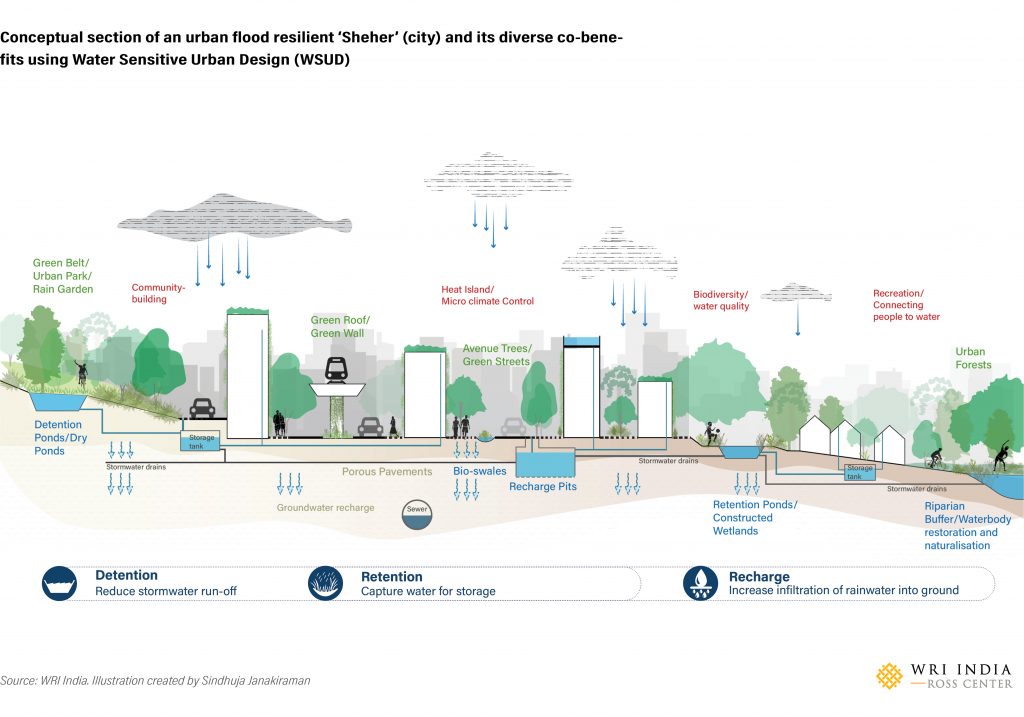
Paving a blue-green way
Sheher’s transport infrastructure contributes to a large area of impervious grey cover which hinders stormwater infiltration and act as rapid water conveyance channels. The authors propose that portion of these grey spaces (such as voids under highways, traffic islands, medians, pedestrian paths) be strategically transformed into permeable blue-green spaces. Depending on the hydrogeology, this grey to blue-green initiative can help reduce surface run-off and aid in groundwater infiltration (see figure below). Such an intervention can be truly multi-functional, with diverse co-benefits such as increase in urban biodiversity, achieve micro-climate control by adding and augmenting green transit corridors, thereby creating clean air and healthy spaces for its urban residents.
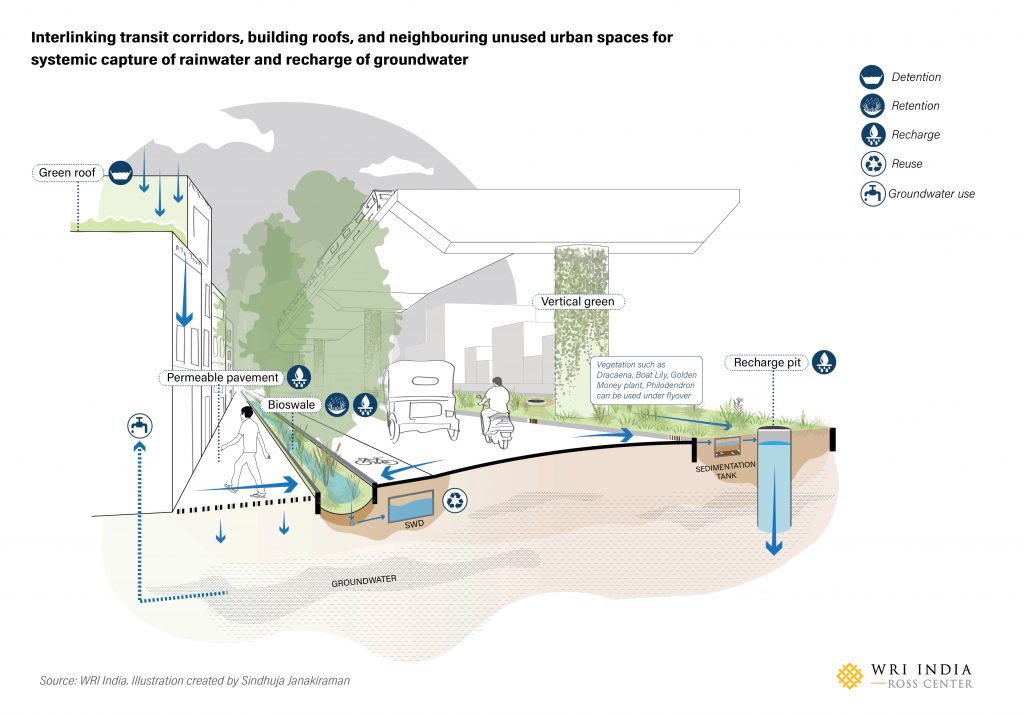
Urban blue-green acupunctures
In traditional Chinese medical theory, acupuncture is defined as small but powerful strategies as pinpoints for areas in need of repair. An overlay of the various urban, social, hydrogeological layers will highlight the most vulnerable, frequently inundated spaces that can benefit from a strategic application of this theory across two different urban settings.
i) Urban Setting A
Areas with high public activity levels such as market places, parking spots, sports arenas, transit hubs, etc., can be used to incorporate the DRR concept. These public spaces can also leverage the small niches, corner greens/buffers, neighbourhood parks around it to be holistically developed into a blue-green acupunctures of varying scales. Multiple acupunctures can also be designed in conjunction. For example, recharge wells can be part of stormwater park that can help improve overall liveability of the area. In case the groundwater level is shallow in an area, water collected into these wells can be treated using native plants, and in cases where its deep then the water can just be allowed to retain and recharge naturally.

ii) Urban Setting B
In Sheher, the marginalised neighbourhoods are adversely affected by the flooding and are further crippled with challenges such as inadequate access to WASH and right to healthy spaces. These type of urban settlements are highly dense, organic in form and lack open spaces, the blue-green acupunctures will have multi-functional and circular values. Small pockets of open spaces (community kitchen gardens, wetlands) will be carved up which can be synergistically designed to provide clean water, livelihood and public green spaces. Efficient rainwater harvesting and recharge wells, can ensure access to safe, clean water for the community.
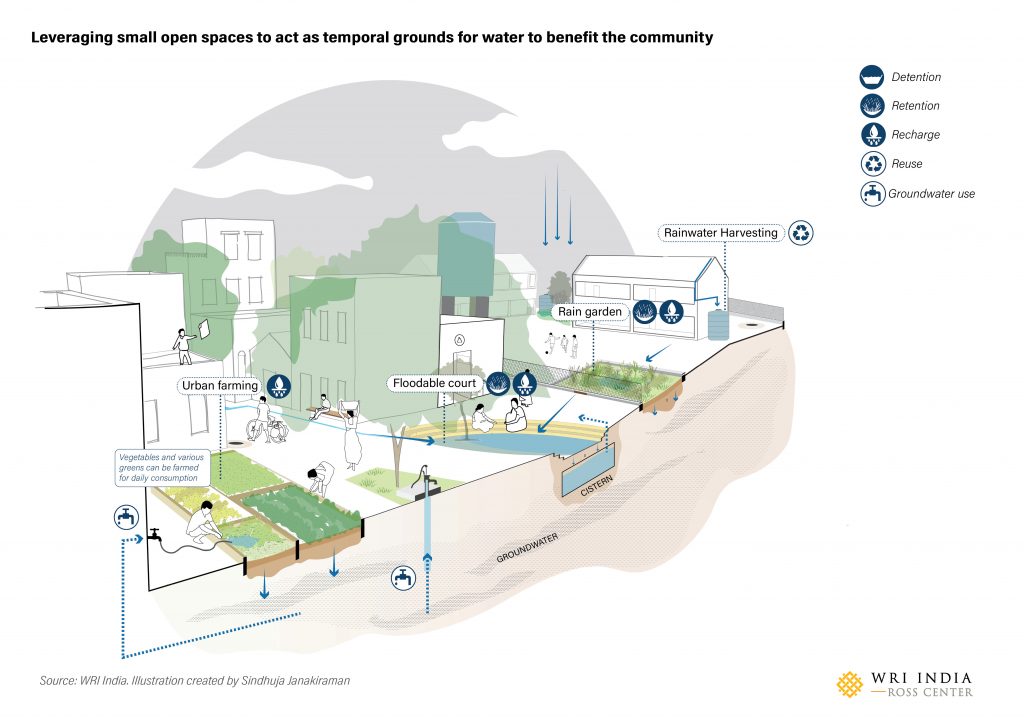
Facilitating the road ahead
Like Sheher, every urban city has its own complexities when dealing with water, there is no silver bullet strategy here. The key takeaway is to develop a deep contextual understanding of a city’s natural infrastructure layer in order aid in stormwater management — Detention-Retention-Recharge — for future use. While good water sensitive design and planning are the backbone, materialization of these envisioned ideas will need more enablers. The availability of nuanced data about various socio-spatial and environmental layers of a city, innovative financing and funding options, cross agency governance — such as a joint benefits authority, active community engagement, and technological innovations — are to name some. All these envisioned conceptualizations for Sheher can only work with a place-based, systems thinking approach, without which cities are going to flood once again.
Views expressed are the authors’ own.


